invention of radio
description: aspect of history relating to the invention of radio
23 results
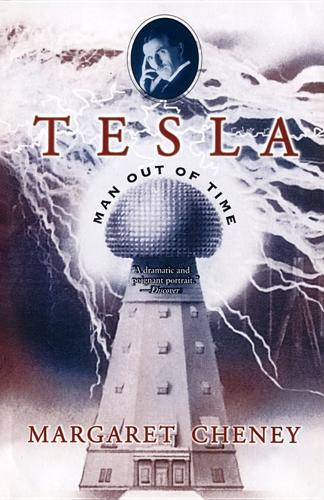
Tesla: Man Out of Time
by
Margaret Cheney
Published 1 Jan 1981
But, by a few years, it precedes Marconi’s inventions and practical demonstrations of wireless telegraphy.”2 Figures 165 and 185, referred to in the United States Supreme Court case, are from Tesla’s 1893 lecture and are frequently cited as evidence supporting his claim of invention of radio. Anderson points out that some have confused the argument with respect to the principles of transmission and reception of radio signals with the matter of transmitting voice—an important improvement made practical by DeForest’s Audion, or triode vacuum tube. “In a discussion of priority in the invention of radio, one must be very specific about definitions,” he writes. “In the . . . case of the Marconi Wireless Telegraph Company of America vs. United States (which was decided June 21, 1943, against the Marconi Company and striking down the fundamental Marconi patent), the following definition evolved out of the exhaustive depositions taken from many technical experts in the fields of radio and the physical sciences: “‘A radio communication system requires two tuned circuits each at the transmitter and receiver, all four tuned to the same frequency.’
…
Edison Chapter 5: The War of the Currents Begins Chapter 6: Order of the Flaming Sword Chapter 7: Radio Chapter 8: High Society Chapter 9: High Road, Low Road Chapter 10: An Error of Judgment Chapter 11: To Mars Chapter 12: Robots Chapter 13: Hurler of Lightning Chapter 14: Blackout at Colorado Springs Chapter 15: Magnificent and Doomed Chapter 16: Ridiculed, Condemned, Combatted Chapter 17: The Great Radio Controversy Chapter 18: Midstream Perils Chapter 19: The Nobel Affair Chapter 20: Flying Stove Chapter 21: Radar Chapter 22: The Guest of Honor Chapter 23: Pigeons Chapter 24: Transitions Chapter 25: The Birthday Parties Chapter 26: Corks on Water Chapter 27: Cosmic Communion Chapter 28: Death and Transfiguration Chapter 29: The Missing Papers Chapter 30: The Legacy Bibliographical Essay Reference Notes Postscript Index ACKNOWLEDGMENTS I wish particularly to thank: Leland Anderson, one of the founders of the Tesla Society,* a coauthor of the annotated Dr. Nikola Tesla Bibliography (San Carlos, Ca., Ragusan Press, 1979), and author of the monograph, “Priority in the Invention of Radio—Tesla v. Marconi.” Mr. Anderson’s research and scholarly works on Tesla have been a major interest of his life. An electrical engineer and former computer consultant, he reviewed my manuscript and generously shared his collection of Tesliana, including many previously unpublished materials and photographs.
…
Harvey Gernsback, president of Gernsback Publications, Inc., for permission to reprint photos, illustrations of the artist Frank Paul, and quotes from “My Inventions,” by Nikola Tesla, that appeared in the Electrical Experimenter and Science & Invention, formerly published by Hugo Gernsback. And to Leland Anderson for permission to quote from “Priority in Invention of Radio, Tesla v. Marconi,” Antique Wireless Association, March 1980. In addition the author is indebted to the Nikola Tesla Museum for words quoted from Colorado Springs Notes, 1899–1900, by Nikola Tesla; to King Peter II for a quotation from A King’s Heritage, Putnam, New York, 1954, and for lines from T.

Billions & Billions: Thoughts on Life and Death at the Brink of the Millennium
by
Carl Sagan
Published 11 May 1998
The real binding up and deprovincial-ization of the planet requires a technology that communicates much faster than horse or sailing ship, that conveys information all over the world, and that is cheap enough to be available, at least occasionally, to the average person. Such a technology began with the invention of the telegraph and the laying of submarine cables; was greatly expanded by the invention of the telephone, using the same cables; and then enormously proliferated with the invention of radio, television, and satellite communications technology. Today we communicate—routinely, casually, with hardly ever a second thought—at the speed of light. From the speed of horse or sailing ship to the speed of light is an improvement by a factor of almost a hundred million. For fundamental reasons at the heart of the way the world works, codified in Einstein's special theory of relativity, we know that there is no way we can send information faster than light.
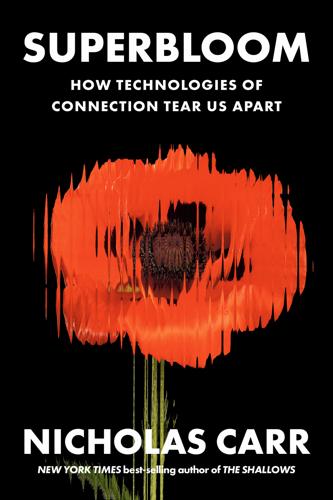
Superbloom: How Technologies of Connection Tear Us Apart
by
Nicholas Carr
Published 28 Jan 2025
As the pace of technological progress quickened, each advance in media triggered a new burst of millenarian rhetoric. Nikola Tesla, in an 1898 interview about his plan to create a wireless telegraph, said that he would be “remembered as the inventor who succeeded in abolishing war.”22 Not to be outdone, his rival, Guglielmo Marconi, declared in 1912 that his invention of radio would “make war impossible.”23 AT&T’s top engineer, J. J. Carty, predicted in 1923 that the telephone system would “join all the peoples of the earth in one brotherhood.”24 In 1932, the popular technology writer and future RCA vice president Orrin Dunlap said that television would “usher in a new era of friendly intercourse between the nations of the earth.”25 Such cheery predictions were put to an early test in the summer of 1914.

Made to Break: Technology and Obsolescence in America
by
Giles Slade
Published 14 Apr 2006
Others, including Norman Cousins, John Kenneth Galbraith, Marshall McLuhan, Archibald MacLeish, and Victor Papanek, would follow Packard’s lead in pointing out how the media create artificia needs within vulnerable consumers.The sheer volume of print Americans have devoted to this topic since 1927 demonstrates that obsolescence has become a touchstone of the American consciousness. The book you have in your hand is a collection of stories that emerged during my search for obsolescence in uniquely American events: the invention of packaging, advertising, and branding; the rivalry between Ford and GM; “death dating”; the invention of radio, television, and transistors; the war and the postwar competition with Japan; rock and roll, the British Invasion,and male fashions; universal home ownership; calculators, integrated circuits, and PCs; the space race, tailfins and TelStar; and the looming crisis of e-waste. The theory and practice of obsolescence play a central role in each of these American milestones.

Extraterrestrial Civilizations
by
Isaac Asimov
Published 2 Jan 1979
For all these reasons radio waves were clearly ideal for longrange communication, and that, too, without the wires that telegraphs and cables required. The first to make practical use of radio waves in this way was the Italian electrical engineer Guglielmo Marconi (1874–1937). In 1901, he sent a radio-wave signal across the Atlantic Ocean, a feat generally recognized as the invention of radio. From that day on, with further improvements and refinements, radio became a more and more important means of communication. It was clear to many people that any technological civilization would surely make use of radio communication in preference to anything else. Therefore, when the planet Mars made a closer than usual approach to Earth in 1924, there was some attempt to listen for radio signals from the presumed civilization that had built its canals.

Climbing Mount Improbable
by
Richard Dawkins
and
Lalla Ward
Published 1 Jan 1996
If life when it starts has anything other than a low probability of giving rise to intelligent life, we might take this as evidence that life itself is rare. An alternative conclusion to this chain of reasoning is the bleak proposal that intelligent life may arise quite frequently, but typically only a short time elapses between the invention of radio and technological self-destruction. Life may be common in the universe, but we are also at liberty to speculate that it is exceedingly rare. It therefore follows that the kind of event we are seeking, when we speculate about the origin of life, could be a very very improbable event: not the kind of event that we can expect to duplicate in the laboratory and not the kind of event that a chemist will deem ‘plausible’.

The Knowledge: How to Rebuild Our World From Scratch
by
Lewis Dartnell
Published 15 Apr 2014
Different crops prefer particular conditions of tilth; wheat, for example, likes a fairly coarse seedbed, with clods about the size of a child’s fist, whereas barley prefers a much finer tilth. Lighter harrowing is applied after sowing to cover the seeds, and can also be used between cultivated rows to tear up weeds. Once an appropriate tilth has been prepared, the next step is to put seeds into the ground. The original meaning of “broadcast”—coined centuries before the invention of radio or TV—is scattering seeds far and wide, tossing them from a sack as you walk back and forth across the field. You can distribute seeds relatively quickly this way, but you have little control over their exact placement, which makes weeding later difficult. But again, with a little bit of ingenuity you can improve this process immeasurably.
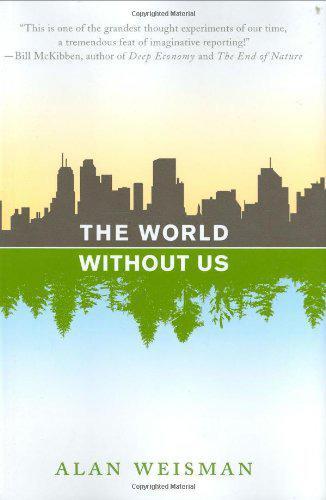
The World Without Us
by
Alan Weisman
Published 5 Aug 2008
DURING THE 1890s, a Serbian immigrant to America, Nikola Tesla, and an Italian, Guglielmo Marconi, each patented devices capable of sending wireless signals. In 1897, Tesla demonstrated sending ship-to-shore pulses across bodies of water in New York, even as Marconi was doing the same among various British isles—and, in 1901, across the Atlantic. Eventually they sued each other over the claim, and the royalties, to the invention of radio. No matter who was right, by then transmission across seas and continents was routine. And beyond: Electromagnetic radio waves—waves much longer than poisonous gamma radiation or ultraviolet sunlight—emanate at the speed of light in an expanding sphere. As they move outward, their intensity drops by a factor of one over the distance squared, meaning that at 100 million miles from Earth, the signal strength is one-fourth what it was at 50 million miles.
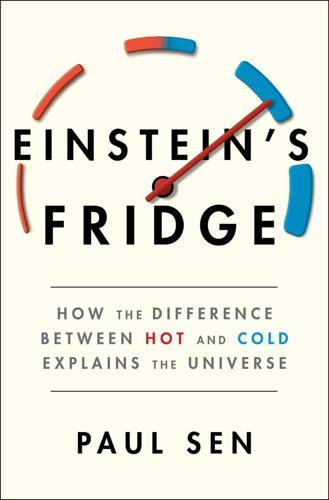
Einstein's Fridge: How the Difference Between Hot and Cold Explains the Universe
by
Paul Sen
Published 16 Mar 2021
But his attention had switched away from gas theory and thermodynamics to electromagnetism. For much of the 1860s, he focused his intellectual energy on the latter, eventually delivering his seminal mathematical analysis of the subject in 1873. That analysis not only described all electric and magnetic phenomena, but it would reveal the true nature of light, enable the invention of radio, and inspire Einstein’s work on relativity. In addition, in 1871, Maxwell was appointed the first head of Cambridge University’s new physics laboratory, the Cavendish. Teaching now became his main preoccupation. In this institution, the next five generations of scientists would discover the electron and the neutron, split the atom, and uncover the structure of DNA.
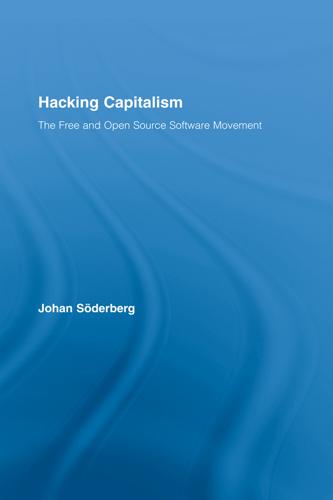
Hacking Capitalism
by
Söderberg, Johan; Söderberg, Johan;
Of course, free hardware projects are much harder to bootstrap than FOSS projects. Production costs, demands on logistics, and patent laws are major obstacles preventing a take-off of a free hardware movement. Despite the difficulties, some comfort can be taken in remembering that the personal computer was the invention of radio amateurs and hippies. And a few hardware projects are up and running at the time of writing. OpenCores is a portal gathering of about 2000 developers collaborating on free hardware devices. The seriousness of the undertaking is suggested by the fact that the industry keeps a close eye on OpenCores, to the point that companies have threatened the developers not to enter their business, while other companies have invested money in the project.
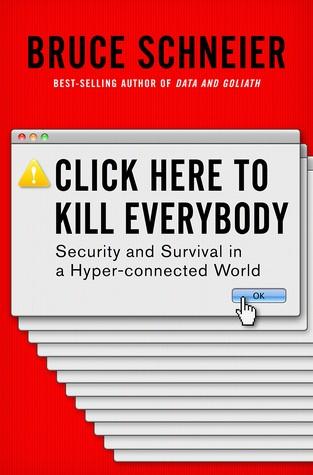
Click Here to Kill Everybody: Security and Survival in a Hyper-Connected World
by
Bruce Schneier
Published 3 Sep 2018
To my mind, both of these organizations are too closely tied to the military and therefore to the part of the government that relies on Internet insecurity, but they’re a start. There is significant historical precedent in the US for this idea. New technologies regularly lead to the formulation of new government agencies. Trains did. Cars did. Airplanes did. The invention of radio led to the formation of the Federal Radio Commission, which became the Federal Communications Commission. The invention of nuclear power led to the formation of the Atomic Energy Commission, which became the Department of Energy. We can debate the specifics, and the appropriate limits of this new agency.

More Everything Forever: AI Overlords, Space Empires, and Silicon Valley's Crusade to Control the Fate of Humanity
by
Adam Becker
Published 14 Jun 2025
Vernadsky’s idea of the noosphere influenced (and was influenced by) Pierre Teilhard de Chardin, a French paleontologist and Jesuit priest.20 Teilhard combined the idea of the noosphere with evolutionary theory and his Catholic faith to arrive at surprising—and surprisingly familiar—conclusions. “Teilhard believed that evolution was not only ongoing but was developing at an exponential rate,” O’Gieblyn writes: Humans, through their use of tools and mechanization, were now in a position to direct the course of their own evolution. The invention of radio, television, and other forms of mass communication had created complex global networks that facilitated more intricate and intimate connections between individual minds.… Teilhard set out a vision for how these technological connections, which he called “the noosphere,” would eventually lead to a dramatic spiritual transformation.
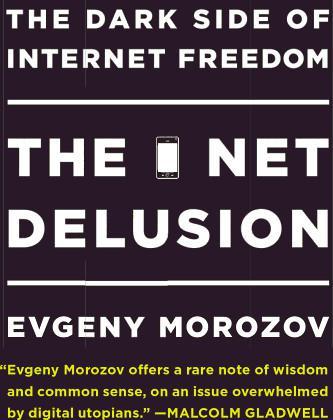
The Net Delusion: The Dark Side of Internet Freedom
by
Evgeny Morozov
Published 16 Nov 2010
One observer at the time, apparently oblivious to the economic forces of global capitalism, mused that airplanes opened up “the realm of absolute liberty; no tracks, no franchises, no need of thousands of employees to add to the cost,” while in 1915 the editor of Flying magazine—the Wired of its day—enthusiastically proclaimed that the First World War had to be “the last great war in history,” because “in less than another decade,” the airplane would have eliminated the factors responsible for wars and ushered in a “new period in human relations” (apparently, Adolf Hitler was not a subscriber to Flying). As much as one could speak of utopian airplane-centrism of the 1910s, this was it. But it was the invention of radio that produced the greatest number of unfulfilled expectations. Its pioneers did their share to overhype the democratization potential of their invention. Guglielmo Marconi, one of the fathers of this revolutionary technology, believed that “the coming of the wireless era will make war impossible, because it will make war ridiculous.”
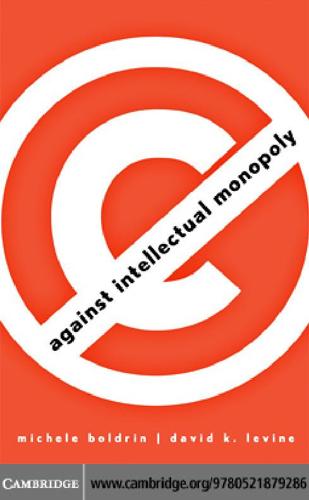
Against Intellectual Monopoly
by
Michele Boldrin
and
David K. Levine
Published 6 Jul 2008
Because, you see, now like then, the game of patenting and intellectual monopoly is not all that democratic and open to the little guys as Ms. Khan’s recent and altogether interesting book would like us to believe. So, it is the case that Marconi, supported by the likes of Edison and Carnegie, kept hammering the U.S. Patent Office until, in 1904, it reversed course and gave Marconi a patent for the invention of radio: “The reasons for this have never been fully explained, but the powerful financial backing for Marconi in the United States suggests one possible explanation.”43 We will spare you the sad story of Nikola Tesla’s hapless fight against Marconi, you can figure that out by yourself. In fact, we are also sparing you the stories of the P1: PDX head margin: 1/2 gutter margin: 7/8 CUUS245-08 cuus245 978 0 521 87928 6 April 29, 2008 15:42 206 Against Intellectual Monopoly many other fights poor Tesla lost against some of the great “inventors” and “entrepreneurial geniuses” of the time, Edison foremost.

How to Invent Everything: A Survival Guide for the Stranded Time Traveler
by
Ryan North
Published 17 Sep 2018
There’s a lot of myth surrounding it, and the credit for paper is traditionally given to a man named Cau Lun, who lived from 48 to 121 CE. However, there’s acheological evidence of paper predating even that date, including some dating as far back as 179 BCE. All the research I found suggests the date here is at best an informed guess! 34 This suggestion that the early invention of radio could’ve saved a lot of time messing around trying to invent clocks that work on boats has been put forward before! I encountered it in Lewis Dartnell’s The Knowledge, which you can find in the bibliography. 35 Like many inventions, radio receivers were independently invented by multiple people at the same time.
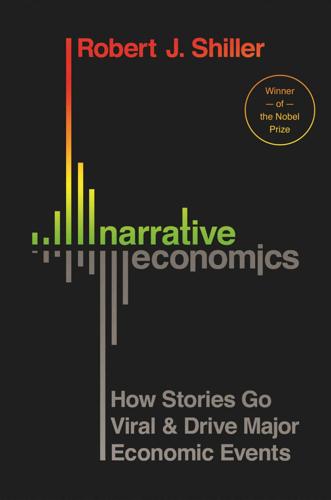
Narrative Economics: How Stories Go Viral and Drive Major Economic Events
by
Robert J. Shiller
Published 14 Oct 2019
New Technology Will Change Contagion Rates and Recovery Rates Notable changes in information technology, with changes in contagion rates and recovery rates, have occurred over the course of history. The early invention of printed books in China, the invention of Gutenberg’s printing press in the fifteenth century, the invention of newspapers in Europe in the seventeenth century, the invention of the telegraph and telephone in the nineteenth century, the invention of radio and television in the twentieth, and the rise of the Internet and social media have all fundamentally altered the nature of contagion, but to date there has been no systematic quantitative study of these inventions’ impact on contagion. Social media and search engines have the potential to alter the fundamentals of contagion.

Inflated: How Money and Debt Built the American Dream
by
R. Christopher Whalen
Published 7 Dec 2010
Yet the U.S. monetary system was an unresolved national question in large measure because the nation remained so dependent upon foreign capital flows. More, the ebb and flow of financial markets was slowly becoming a daily political referendum on the job done by Washington regarding the economy in general, an influence that would be made acute with the invention of radio, television, and eventually the internet over the next century. The public’s concern regarding the adequacy of the money supply in the first decade of the twentieth century is all the more ironic since it was growing at a pretty brisk pace compared with the nation’s population, which was at about 76 million at the turn of the century and reached 97 million by 1913.
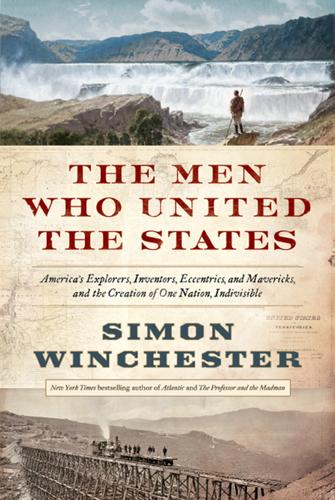
The Men Who United the States: America's Explorers, Inventors, Eccentrics and Mavericks, and the Creation of One Nation, Indivisible
by
Simon Winchester
Published 14 Oct 2013
He was also afflicted with an obsessive-compulsive disorder; he refused to shake hands, he would feel a need to read all the books written by any author he encountered, and he had a peculiar devotion to the number three and to any other number divisible by it. Though the Serbian-born inventor Nikola Tesla, clever, fragile, and an eccentric showman, was until recently widely overlooked, it is now generally accepted that he made vast contributions to the development of alternating electrical current and the invention of radio, long before Marconi. He has lately won legions of new admirers, mostly young, who see him as a forgotten hero of American science. Nikola Tesla was, in short, the classic exemplar of the mad scientist, and the fact that he made dangerously interesting inventions by the score resonates still with today’s imaginative fans of the far-fetched.

Tailspin: The People and Forces Behind America's Fifty-Year Fall--And Those Fighting to Reverse It
by
Steven Brill
Published 28 May 2018
BuzzFeed News, after conducting an analysis of web traffic and engagement following the 2016 American election, found that “the top-performing fake election news stories on Facebook generated more engagement than the top stories from major news outlets, such as the New York Times, Washington Post, Huffington Post, NBC News, and others.” The invention of radio had united the country by allowing everyone to share the same experience. They could listen together to an FDR fireside chat or an Edward R. Murrow report from London as the bombs fell. With the coming of television, they could watch together as Murrow took on Joseph McCarthy, as John Kennedy, Jr., saluted his father’s coffin, as Walter Cronkite reported on the Vietnam War, or as Neil Armstrong walked on the moon.

Tesla: Inventor of the Electrical Age
by
W. Bernard Carlson
Published 11 May 2013
Howeth, History of Communications-Electronics in the United States Navy, chap. 19, “Operations and Organization of the United States Naval Radio Service during Neutrality Period,” sec. 3, “Operation of the Tuckerton and Sayville Stations,” http://earlyradiohistory.us/1963hw19.htm. 16. “Tesla Sues Marconi on Wireless Patent,” New York Times, 4 August 1915; NT, Radio Testimony; Peterson quote is from http://www.tfcbooks.com/teslafaq/q&a_022.htm; Leland I. Anderson, Priority in the Invention of Radio—Tesla vs. Marconi (Breckenridge, CO: Twenty-First Century Books, n.d.); A. David Wunsch, “Misreading the Supreme Court: A Puzzling Chapter in the History of Radio,” Antenna 11, no. 1 (November 1998), http://www.mercurians.org/1998_Fall/Misreading.htm. 17. Branimir Jovanović, “Nikola Tesla-Research Methodology in the Light of Facts Discovered during Reconstruction of His Work on Bladeless Pumps from 1908–1911” (paper presented at ICOHTEC meeting, Belfort, France, July 1998), 8. 18.

The Wealth of Networks: How Social Production Transforms Markets and Freedom
by
Yochai Benkler
Published 14 May 2006
During periods of perturbation, more of the ways in which society organizes itself are up for grabs; more can be renegotiated, as the various other components of human stability adjust to the changes. To borrow Stephen Jay Gould's term from evolutionary theory, human societies exist in a series of punctuated equilibria. The periods of disequilibrium are not necessarily long. A mere twenty-five years passed between the invention of radio and its adaptation to the mass-media model. A similar period passed between the introduction of telephony and its adoption of the monopoly utility form that enabled only one-to-one limited communications. In each of these periods, various paths could have been taken. Radio showed us even within the past century how, in some societies, different paths were in fact taken and then sustained over decades.

The Strangest Man: The Hidden Life of Paul Dirac, Mystic of the Atom
by
Graham Farmelo
Published 24 Aug 2009
Robertson, M. (1985) ‘Recollections of Princeton: The Princeton Mathematics Community in the 1930s’, available at http://www.princeton.edu/~mudd/finding_aids/ mathoral/pm02.htm (accessed 22 May 2008). Roqué, X. (1997) ‘The Manufacture of the Positron’, Studies in the Philosophy and History of Modern Physics, 28 (1): 73–129. Ross, S. (1962) ‘Scientist: The Story of the Word’, Annals of Science, 18 (June): 65–85. Rowlands, P. and Wilson, J. P. (1994) Oliver Lodge and the Invention of Radio, Liverpool: PD Publications. Rozental, S. (ed.) (1967) Niels Bohr: His Life and Work as Seen by His Friends and Colleagues, New York: Wiley. Russell, B. (1972) The Collected Stories, London, George Allen & Unwin. Sachs R. G. (ed.) (1984) The Nuclear Chain Reaction: Forty Years Later, Chicago, Ill.: University of Chicago Press.
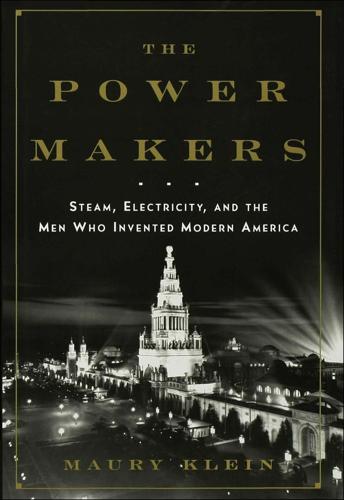
The Power Makers
by
Maury Klein
Published 26 May 2008
Its gradual departure as a concept marked an end to the physical picture on which Faraday and Maxwell alike had relied to conceive their theories. After Maxwell, mechanical explanations of electric phenomena no longer sufficed, yet theoretical knowledge of their nature remained far from complete.64 Stupendous discoveries and developments flowed from Maxwell’s concepts. They led most directly to the invention of radio and more abstractly to Albert Einstein’s theory of relativity. At the time, however, many physicists shrank from Maxwell’s argument despite its solid grounding in mathematics. They could not accept the notion that insulators, which confined electric currents within prescribed paths, could also be the seat of electric action.